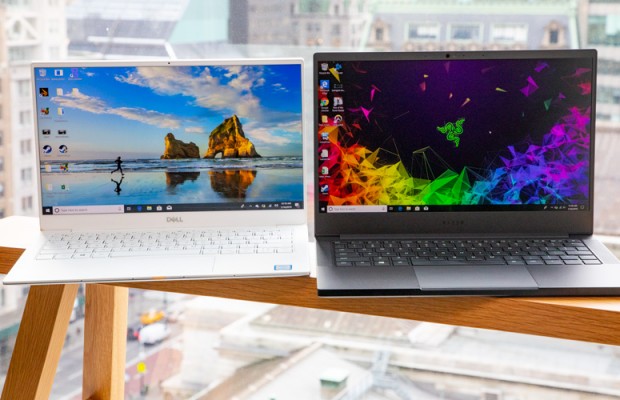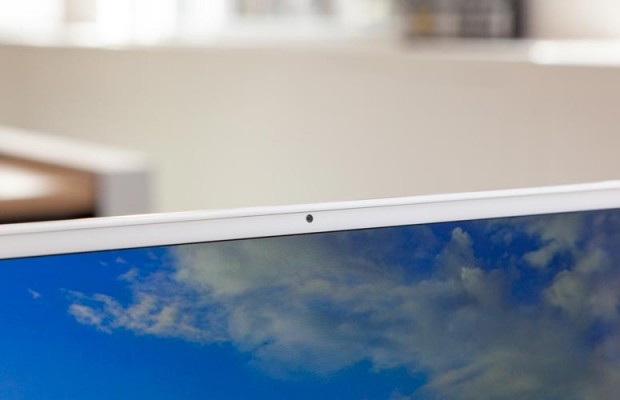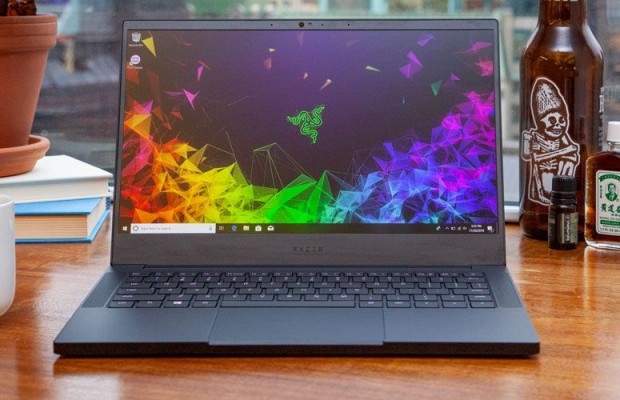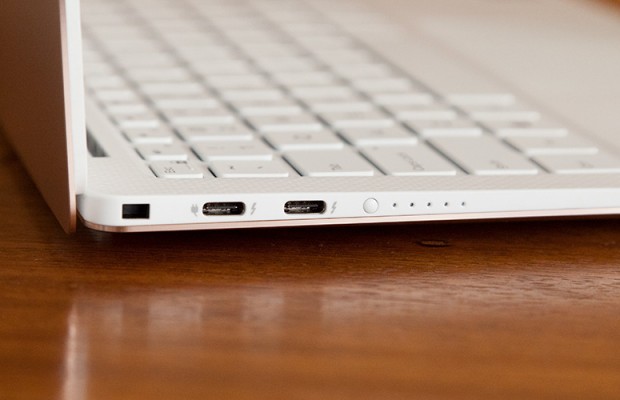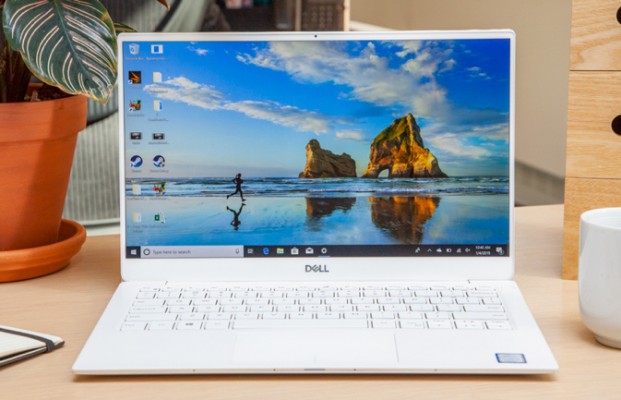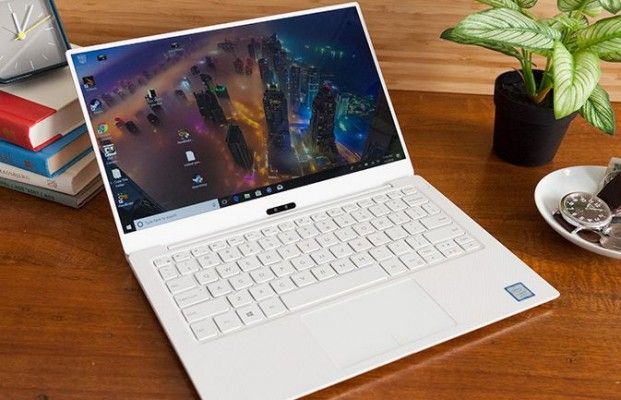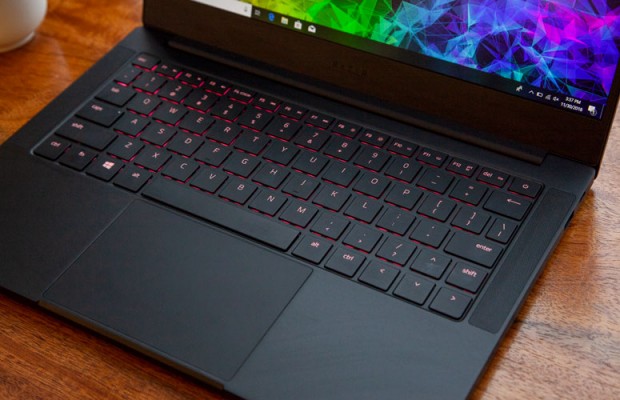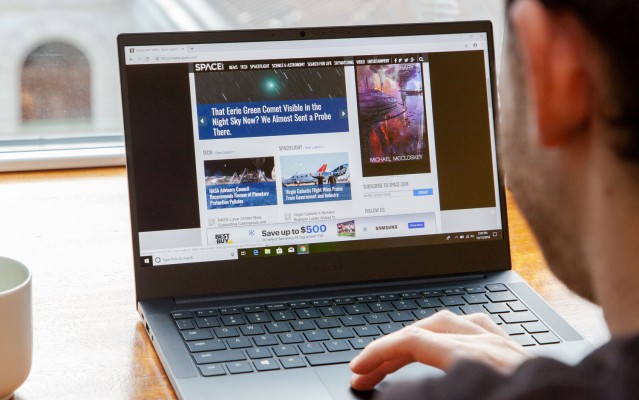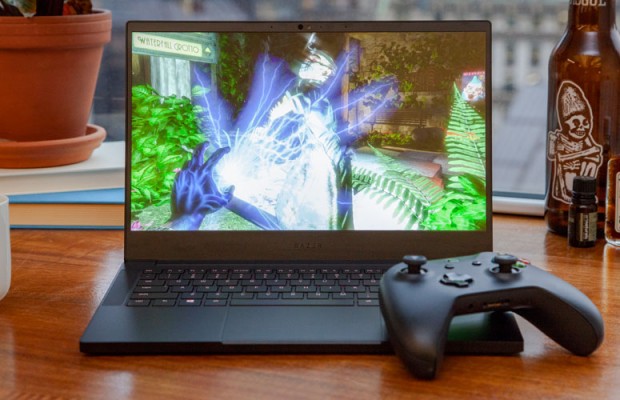Dell XPS 13 2019 vs. Razer Blade Stealth: Which Ultraportable Wins?
Lighter. Slimmer. Stronger. An ultraportable needs all three qualities and more to be considered a top-tier product. Which brings us to the Dell XPS 13 and the Razer Blade Stealth. The XPS 13 has ruled the roost over the last several years as our top ultraportable. Dell hopes to extend its reign by adding an Intel Whiskey Lake processor, a snazzy redesign and by restoring the webcam to its rightful position while maintaining those ridiculously slim bezels.
But not so fast. The Blade Stealth can't be easily written off. Not with its sexy redesign and over 8 hours of battery life. It's also packing Whiskey Lake and — a first in the Stealth line —Nvidia graphics, making it one of the most powerful ultraportables on the market. But in the battle for ultraportable supremacy, only one system can reign supreme. Read on to find out which laptop emerges victorious.
| Row 0 - Cell 0 | Dell XPS 13 | Razer Blade Stealth |
| Starting Price | $899 | $1399 |
| CPU | 1.8-GHz Intel Core i7-8565U CPU | 1.8-GHz Intel Core i7-8565U CPU |
| GPU | Intel UHD 620 Graphics | Nvidia GeForce MX 150/Intel UHD 620 Graphics |
| Storage | 1TB PCIe | 256GB SSD |
| RAM | 16GB | 16GB |
| Ports | Two Thunderbolt 3, USB Type-C/mini Display Port, microSD card slot, headset jack | Two Thunderbolt 3, Two USB 3.1, headset jack |
| Battery Life | 7:50 | 8:05 |
| Display | 13.3 inches, 3840 x 2160 | 13.3 inches, 1920 x 1080 |
| Key Travel | 1mm | 0.8mm |
| Size | 11.9 x 7.8 x 0.3~0.5-inches | 12 x 8.3 x 0.6 inches |
| Weight | 2.7 pounds | 2.9 pounds |
Design
Over the past several years, Dell has proven time and time again that its not afraid to play with color, transitioning from its tried-and-true silver and black to a captivating rose-gold anodized aluminum finish with white glass-fiber weave. The company has flipped the script again with a new color scheme: Frost Silver with Arctic White. It’s just as pretty, if only somewhat understated.
However, the biggest design change in the XPS 13 fixes one of our longstanding complaints. That's right, Dell finally found a way to restore the webcam to its proper position in the top bezel, putting an end to the "nosecam." It accomplished the task by slightly increasing the thickness of the InfinityEdge bezel and creating its smallest webcam ever at 0.08 inches.
That’s not to say the Blade Stealth hasn't undergone a few changes itself. The system now sports that boxy retro-chic look that Razer started with the Blade 15. It's a subtle change, but it suits the more serious vibe Razer's trying to strike with mobile professionals, especially after swapping out the glowing snake emblem for a blacked-out glossy symbol. But on the whole, this is the same Razer we've come to know and love— a svelte beauty fashioned from black anodized aluminum.
Sign up to receive The Snapshot, a free special dispatch from Laptop Mag, in your inbox.
Speaking of svelte, I'm used to the Blade Stealth (2.9 pounds, 12 x 8.3 x 0.6 inches) being the lightest and slimmest in the land. However, at 2.7 pounds and 11.9 x 7.8 x 0.3~0.5 inches, Dell has beaten Razer at its own game.
Winner: Dell XPS 13
Ports
Due to the wafer-thin profiles of both laptops, neither laptop has a lot of space to accommodate a lot of ports. But of the two, the XPS 13 offers the most versatility. The Dell has a couple of Thunderbolt 3 ports as well as a USB Type-C port, which doubles as a mini DisplayPort. The system also has a microSD card slot in case you want to expand the system's storage and a headset jack.
The Blade Stealth also has a pair of USB 3.1 Type-A ports, two Thunderbolt 3 ports and a headset jack.
Winner: Dell XPS 13
Display
Dell might have had to expand the InfinityEdge display ever so slightly, but it's still got some of the slimmest bezels in the land. Those nearly nonexistent bezels allow you to really focus on the captivating beauty of the XPS 13's 13.3-inch 4K display.
I was really impressed by the color, sharpness and brightness of the touch screen. It registered 119 percent of the sRGB color gamut during our testing and averaged an impressive 375 nits of brightness. The Blade Stealth's 1080p display was hardly a slouch with its 120 percent color gamut and 346 nits of brightness.
Although we reviewed the Blade Stealth with a 1080p panel, you can upgrade it a 4K touchscreen if you’re willing to pay a bit more. Conversely, Dell has several configurations of the XPS 13 that feature a 1920 x 1080 non-touch display.
Winner: Dell XPS 13
Keyboard
Razer made some changes to the Stealth keyboard that I'm not particularly fond of as a touch typist. The Right Shift, Enter and Backspace keys have been significantly reduced on the island-style keyboard to make room for the Arrow Keys. As someone who uses Right Shift more than Left Shift, typing became a very slow, deliberate experience.
And instead of having the ability to program the lighting on each individual key, Razer has limited the light show to only one zone. That means that if you change one key's color, you change them all. It's still pretty as all get-out, and you can still program macros if you so desire.
The XPS doesn't have any fancy customizable backlighting. Instead, you get a stylish Chiclet-style keyboard with bright white backlighting. And while this is fine, I can't help but imagine how multicolored lighting would look against those white keys.
MORE: How To Deal With Dysfunctional Keys On Your Keyboard
Regarding actual typing experience, this round goes to the XPS 13. With a 1 millimeter key travel (1.5-2mm is the ideal range) and 63 grams of actuation force (60g is our minimum), the XPS 13 has just enough pop to keep me from bottoming out while typing. The Blade Stealth has shallower key travel (0.8 mm), which is somewhat evened out by the 67g actuation. However, the shorter keys make typing on the Blade Stealth a chore.
Winner: Dell XPS 13
Performance
The era of Whiskey Lake is upon us. Armed with a 1.8-GHz Intel Core i7-8565U processor with 16GB of RAM, both the Blade Stealth and the XPS 13 are formidable machines. Running our general performance benchmark, the XPS 13 hit 14,936, while the Blade Stealth reached 15,878.
During the File Transfer test, the XPS 13's 1TB PCIe SSD duplicated 4.97GB of multimedia files in 9 seconds. That translates into a lightning-fast 565 megabytes per minute. The Blade Stealth's 512GB PCIe NVMe SSD was no match with 254 MBps.
When we ran the video-transcoding test, the Dell XPS 13 took 19 minutes and 20 seconds to transcode a 4K video to 1080p, while the Blade Stealth completed the task in 20:34.
Winner: Razer Blade Stealth
Graphics and Gaming
Neither the XPS 13 nor the Blade Stealth will be playing newer AAA games. However, the Blade Stealth has a bit of an edge thanks to its discrete Nvidia Geforce MX 150 GPU with 4GB of VRAM. The first of Razer's ultraportable laptops to feature discrete graphics, the latest version of the Blade Stealth can actually play a fair amount of games without being tethered to a Core X or Core V2.
When we ran the Dirt 3 benchmark, the laptop achieved a whopping 164 frames per second. The XPS 13 with its integrated Intel UHD 620 Graphics GPU delivered a respectable 88 fps.
Winner: Razer Blade Stealth
Battery Life
Something we've consistently dinged Razer on is the battery life. For all its good looks and power, Razer laptops typically tapped out on endurance. Thankfully, the 1080p Blade Stealth breaks that unfortunate trend, lasting 8 hours and 5 minutes on the Laptop Mag Battery Test.
MORE: Longest Battery Life Laptops
The surprise here is the XPS 13. Because of the 4K panel on our review model and Whiskey Lake's unexpected power consumption, the laptop lasted only 7:50. However, we're expecting a much better result from the 1080p configuration.
Pricing and Value
I reviewed the $2,499 version of the Dell XPS 13, which has a 1.8-GHz Intel Core i7-8565U CPU with 16GB of RAM, a 1TB PCIe SSD, an Intel UHD 620 Graphics GPU and a 4K touch screen.
The base model is a much more reasonable $899, which gets you a 2.1-GHz Intel Core i3-8145U CPU, 4GB of RAM, a 128GB M.2 PCIe NVMe SSD, an Intel UHD 620 Graphics GPU and a 1080p non-touch display. The $1,209 configuration offers a 1.6-GHz Intel Core i5-8265U CPU, 8GB of RAM, a 256GB M.2 PCIe NVMe SSD, an Intel UHD 620 Graphics GPU and a 1080p non-touch panel.
Over the past few years, Razer has been working on giving consumers more cost-effective options. Unfortunately, it still has a way to go with the Blade Stealth. The base model costs $1,399, which nets you a 1.8-GHz Intel Core i7-8565U CPU with 8GB of RAM, a 256GB SSD, an Intel UHD 620 Graphics GPU and a 1920 x 1080 non-touch screen. For $1,599, you get double the RAM and a Nvidia GeForce MX 150 GPU with 4GB of VRAM and a 1080p non-touch screen. The $1,899 model doubles the storage and upgrades you to a 4K touch screen.
Winner: Dell XPS 13
Overall Winner: Dell XPS 13
You really can't go wrong with the latest versions of the Razer Blade Stealth and Dell XPS 13. They both have exquisite designs, beautiful displays and the impressive power of Intel's Whiskey Lake processors. However, the XPS 13 is lighter and slimmer than the Blade Stealth, has a brighter display, a more comfortable keyboard and more versatile ports. And starting at $899, it's definitely more wallet-friendly.
But the Blade Stealth consistently delivered better performance, offers longer battery life and has actual discrete graphics. It's not the strongest GPU out there, but it’s still better than integrated graphics.
Overall, the Dell XPS 13 is our top pick for those looking for a lightweight, all-around work machine, while the Blade Stealth is the best choice for doing work and actual serious play on the go.
| Row 0 - Cell 0 | Dell XPS 13 | Razer Blade Stealth |
| Design | Row 1 - Cell 2 | |
| Ports | Row 2 - Cell 2 | |
| Display | Row 3 - Cell 2 | |
| Keyboard | Row 4 - Cell 2 | |
| Performance | Row 5 - Cell 1 | |
| Graphics and Gaming | Row 6 - Cell 1 | |
| Battery Life | Row 7 - Cell 1 | |
| Pricing and Value | Row 8 - Cell 2 |
Credit: Laptop Mag

Sherri L. Smith has been cranking out product reviews for Laptopmag.com since 2011. In that time, she's reviewed more than her share of laptops, tablets, smartphones and everything in between. The resident gamer and audio junkie, Sherri was previously a managing editor for Black Web 2.0 and contributed to BET.Com and Popgadget.
